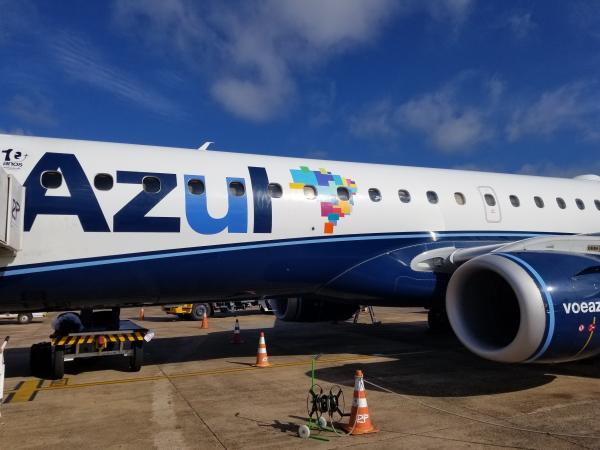It Was a “Dam” Good Time

Day 8 brought a new adventure as our group traveled to the interior of Brazil from Campinas. Early Friday morning, we boarded Azul Airlines flight 4406 to Foz Do Iguacu, with the flight lasting for a little over an hour. The town of Foz Do Iguacu is located in the state of Parana and is a major center for tourism and energy production. Upon arriving in the town, we traveled to our hotel, Nadai Hotel in Foz Do Iguacu. After dropping off our luggage, we headed off to lunch at Barracao for an all-you-can-eat buffet that included Brazilian dishes such as beef, salad bar, noodles, and various sides.
After lunch, we boarded a bus and headed to the Itaipu Dam for a technical tour. Our tour started out by taking a bus around the dam and looking at different areas, to get a better perspective on the construction and how it works. On our technical tour, we were able to walk in the dam and learn about its basic functions. Our group discovered how the flow of water moves from the lake through the pipes to the generator, which produces electricity. We were allowed to walk through the tunnels of the dam, and our guides took us across the Brazil-Paraguay border, as the dam straddles both countries.
While the Itaipu Dam is the second largest dam in the world, it is the most productive in power generation, generating approximately 2.5 billion megawatts per hour. Currently, the dam is operated by a company that is jointly owned by the governments of Paraguay and Brazil. The construction of Itaipu Dam began in 1975 after years of bilateral negotiations over the construction project. The dam was eventually completed in 1984, with the operation of the first turbine. In subsequent years, additional turbines were installed until, by 1994, the dam consisted of 18 turbines. In 2007, an additional 2 turbines were added to the dam, meaning that today, the dam consists of 20 power generators. In today’s dollars, the final cost of the project is approximately $43.5 billion dollars ($18 billion in 1984). Annually, the dam generates over $3.5 billion dollars in revenues, with the cost of the project to be fully reimbursed by roughly 2023.
The company that manages Itaipu Dam can only sell the electricity to Paraguay and Brazil, with both countries being entitled to 50% of the total energy production generated. However, as Paraguay is a small country, it is able to meet approximately 85% of its electricity demand using only a fraction of the energy to which it is entitled. Therefore, Paraguay earns money by selling their excess energy back to Brazil. Today, the total energy that Brazil consumes from the dam accounts for between 15-17% of Brazil’s electricity.
This tour was very beneficial to us, as it generates a large amount of discussion around sustainable energy in Latin America. We would like to thank the dam tour guide, Christian and his crew for the amazing experience, along with our Foz do Iguazu guide, Fabio for making this an amazing experience, and we look forward to the second half of our trip.

![]()